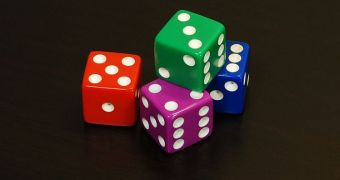Experts propose that way in which we perceive randomness, or expect it to look like, is something that has been with human beings for a long time, and that remains relatively unchanged as time passes.
This was again proven recently during a panel discussion on Probability and Risk, which was held at the World Science Festival. The live experiment was carried out by Massachusetts Institute of Technology (MIT) expert Josh Tennenbaum.
His approach to proving this was quite ingenious, attendants later said. The expert did five coin flips, and asked all members of the audience to write down what results they thought occurred during each flip on a piece of paper.
At the end of the study, when the audience was asked about the specific series of results that had turned out, about 12 people raised their hands. At the beginning of the meeting, Tennenbaum had told everyone that he would transmit the correct results psychically, and that appeared to have come true.
But the explanation for that is a lot more complex than supernatural phenomenon, and it lies within our skills of predicting how complete random events will look like. Unwittingly, participants at the panel also took into account probabilities.
For instance, very few wrote down head (H) and tail (T) sequences that looked like TTTTH, though the possibility of these results occurring was statistically significant. Rather, people wrote down results such as TTHTH, which they believed to be truly random, Wired reports.
The significance the outcome of this experiment has was immediately twisted out of proportion. The MIT expert indeed appeared to be psychic, and his results were even statistically meaningful.
But the experiment can be explained by the fact that humans have an excellent sense of how the unexpected, or the random, will appear to a casual observed, even if only at a subconscious level.
Tennenbaum says that expectation graphs produced during this meeting – from analyzing the answers participants gave – were eerily similar to ones produced back in the 1930s, suggesting a long-term consistency that these expectations had in the human mind.
The only exception to this rule, the expert explained, was if the experiment was carried out in front of an audience with mathematical training. People who study statistics and probability are likely to select any possible outcome, since they know that the chances of each turning up are the same.

 14 DAY TRIAL //
14 DAY TRIAL //